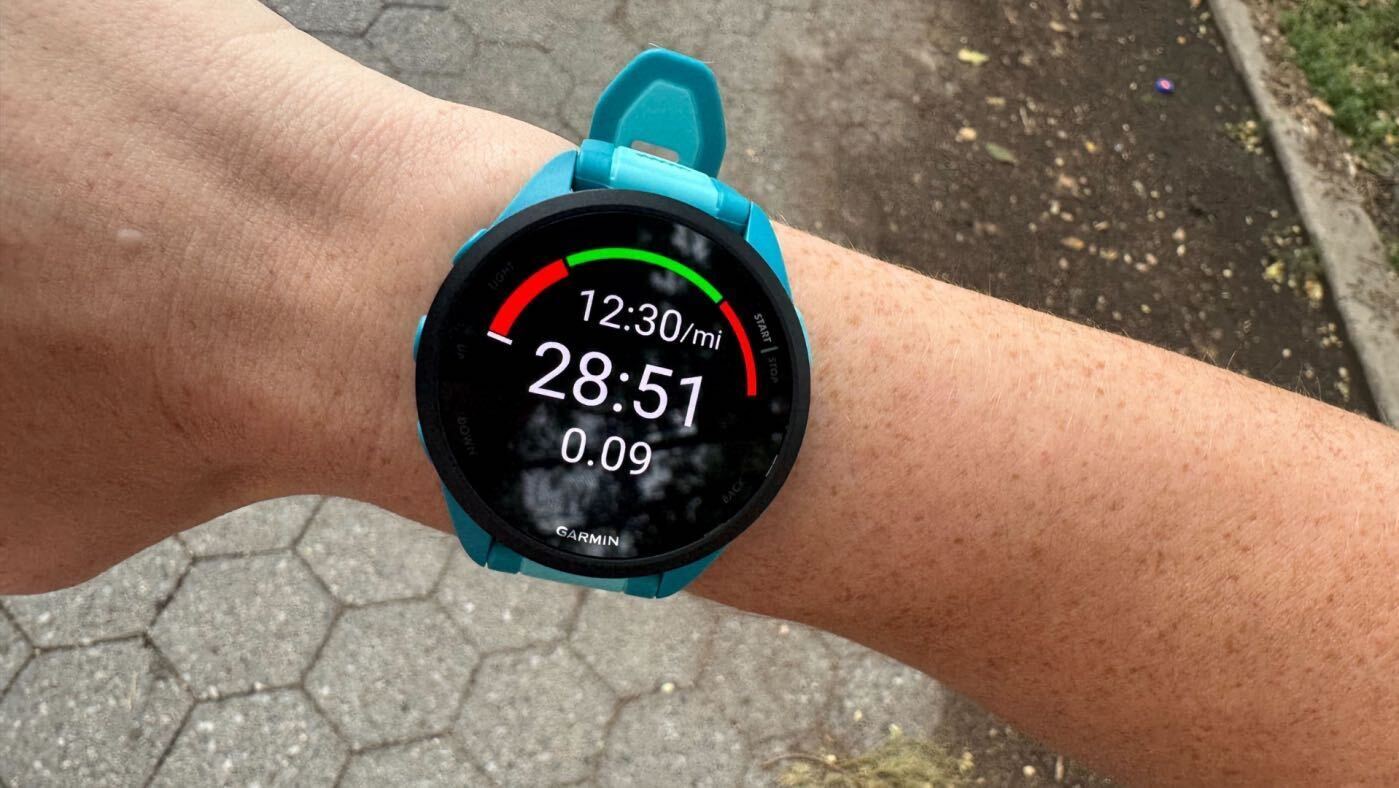We may earn a commission from links on this page.
Huge news: You’ve been running too fast. Unless you’re in a race or doing a specific workout, you probably should be running at a conversational pace. But pacing yourself is tougher than it looks. I’m no stranger to starting my runs too fast and burning out halfway through. Or, I cruise along too slowly when I meant to push myself. For years, this made my training felt inconsistent, and I couldn’t understand why some days felt effortless while others left me gasping for air within the first mile.
Then, while testing the Garmin Forerunner 165 (which I review here), I fell in love with Garmin’s structured workout features. It was game-changer for me to look down at my watch and see not just some basic interval timer, but a tool that actually guides you through each phase of your workout with specific pace or heart rate targets.
Why you need to use Garmin’s structured workouts
I’ll confess: Before using structured workouts, I relied entirely on perceived effort to guide my pace. The problem? My perception was wildly unreliable. On days when I felt energetic, I’d bolt out of the gate like I was racing a 5K, even during what should have been an easy recovery run. On days when I felt sluggish, I’d shuffle along at a pace that barely qualified as jogging, even during tempo sessions.
This inconsistency wasn’t just frustrating—it was counterproductive. Running too hard on easy days prevented proper recovery, while running too easy on workout days meant I wasn’t getting the training I needed to improve.
How to send a workout to your Garmin watch
Here’s how I set up a typical threshold run.
Step 1: Plan the workout
Using Garmin Connect on my phone, I create a custom workout with distinct phases:
10-minute warm-up at an easy pace (usually 30-60 seconds slower than my threshold pace)
20-minute threshold effort at my current threshold pace
10-minute cool-down back to easy pace
Your workout can look like anything, and the most important part is setting the right pace for you.
Credit: Meredith Dietz
Step 2: Define your targets
For each phase, I set pace ranges rather than exact targets. For threshold work, I might set a range of 8:00-8:20 per mile if my current threshold pace is around 8:10. This gives me a narrow window to work within—challenging enough to provide training benefit, but achievable enough to maintain for the entire interval.
While threshold runs were my introduction to structured workouts, you can design any kind of run you like:
Interval sessions: Like with a threshold, push yourself with target paces for the fast intervals, then set a properly slow enough pace for your recovery jogs.
Progressive runs: These start easy and gradually increase pace every few minutes.
Recovery runs: These need to be slow, with honest upper pace limits, so I don’t accidentally turn them into moderate efforts.
Long runs: With specific pace targets for different portions, like negative splits or race-pace segments.
Step 3: Send the workout to your watch
Once you’re happy with your workout structure, make sure to save it in Garmin Connect. Then, locate the workout and select the “Send to Device” option, choosing your watch from the list of compatible devices. Finally, sync your watch with the app to transfer the workout.
Step 4: Follow your watch
Once the workout is loaded on my watch, I let it be my coach. When I’m in the threshold phase and my pace drops to 8:25, the watch alerts me that I’m below target. When my competitive side tries to push the pace to 7:50, it warns me that I’m above target.
Credit: Meredith Dietz
What makes this system so effective is the immediate feedback. Instead of checking my watch every few seconds and doing mental math to figure out if I’m on pace, the watch does all the calculations for me. The screen shows my current pace, target pace range, and uses color coding—green when I’m in the zone, red when I’m off target. When you are in the red in one direction or the other, you receive a gentle vibration. I especially appreciate that this vibration feels different than the one that indicates a new mile/lap.
I no longer have to wonder if I’m running hard enough or too hard. The watch tells me exactly where I need to be, and my job becomes simple: Stay in the green zone. More importantly, I think I’m developing a much better understanding of pace and effort. My goal is to estimate my current pace within 5-10 seconds per mile just by feel. For now, I’ve learned to recognize what sustainable threshold effort actually feels like versus the unsustainable pace I used to mistake for “comfortably hard.”
For any runner struggling with consistency or wondering if they’re training at the right intensities, I can’t recommend structured workouts highly enough. Set up your targets, trust the technology, and prepare to discover what properly paced training can do for your running.
